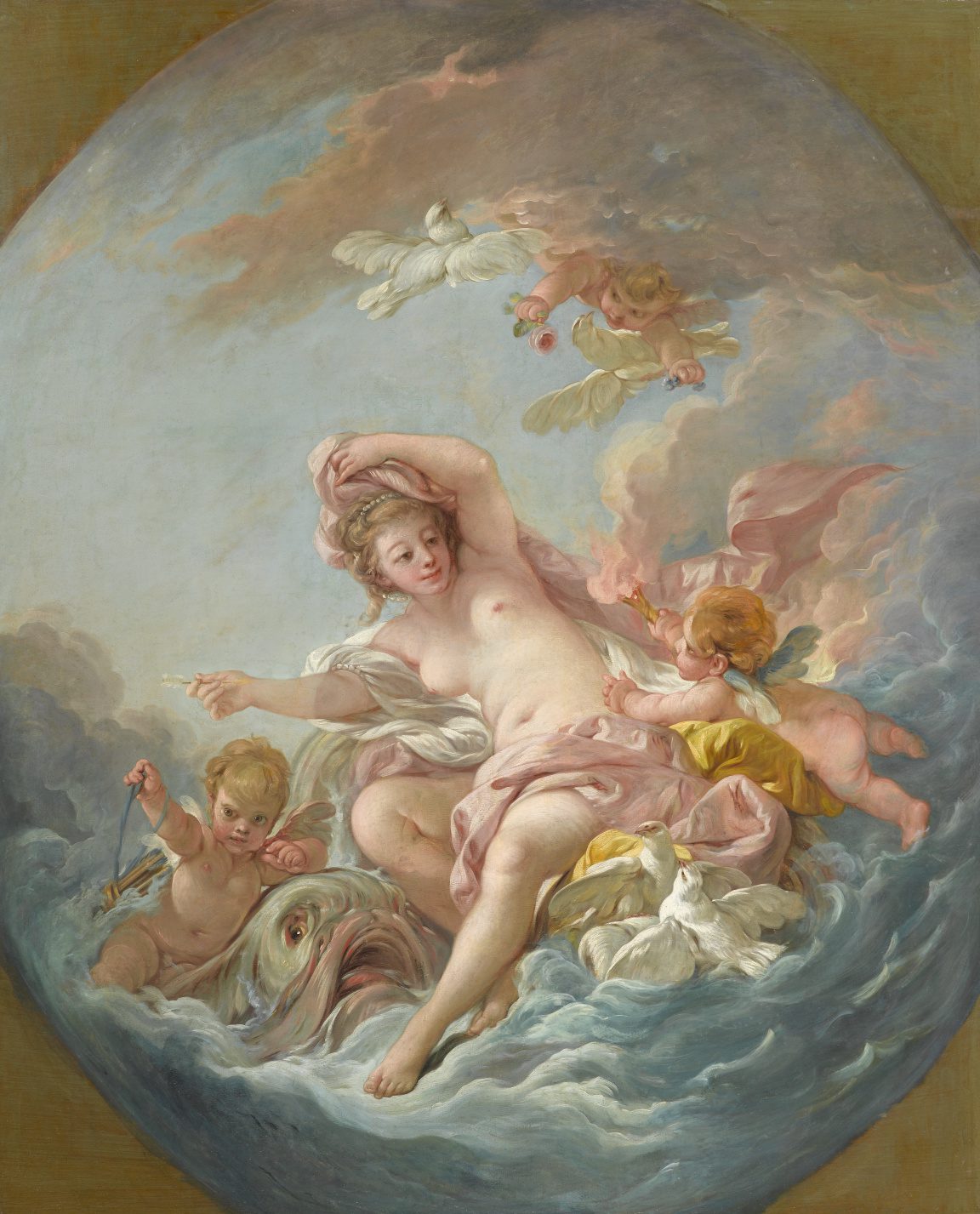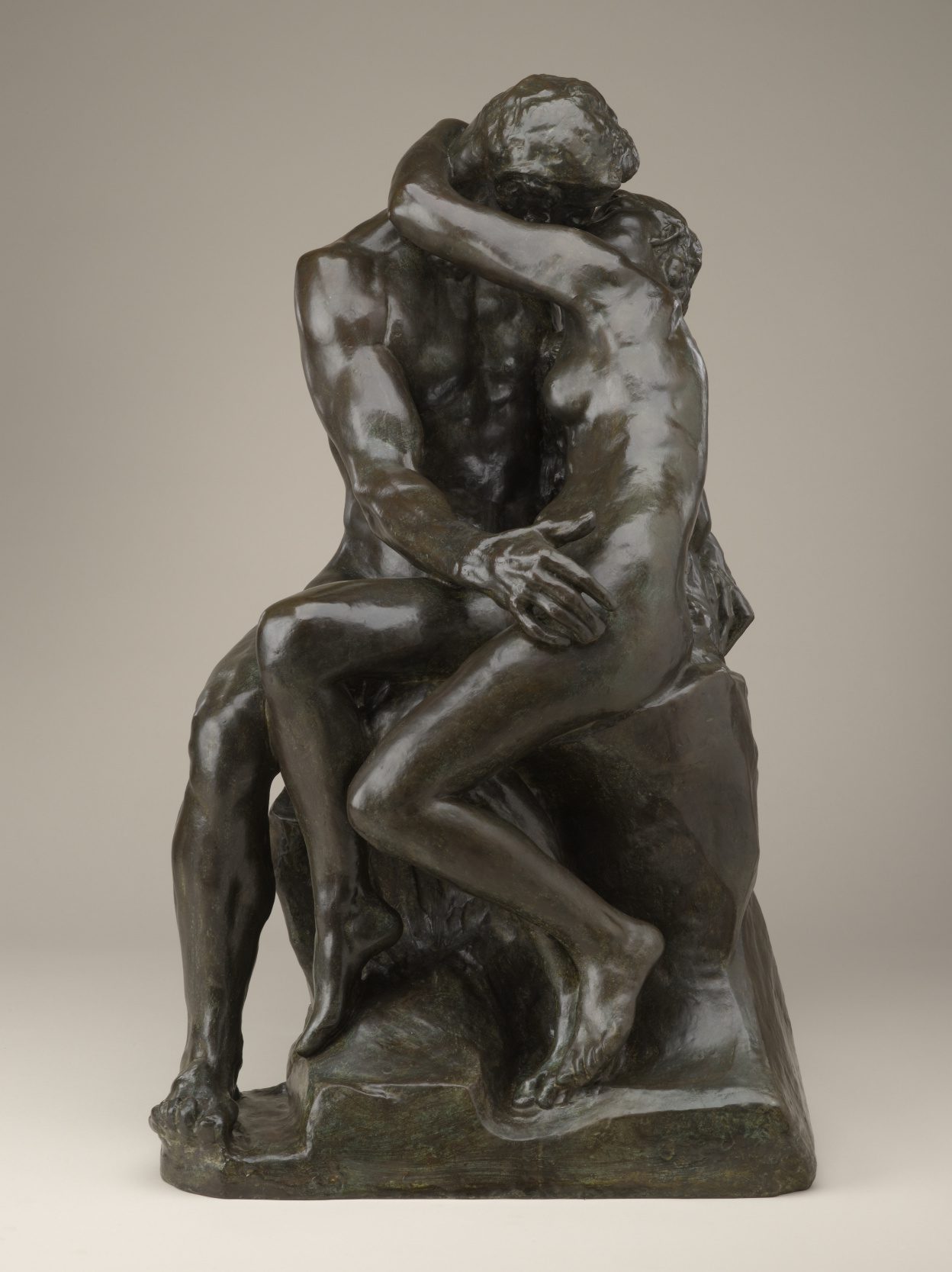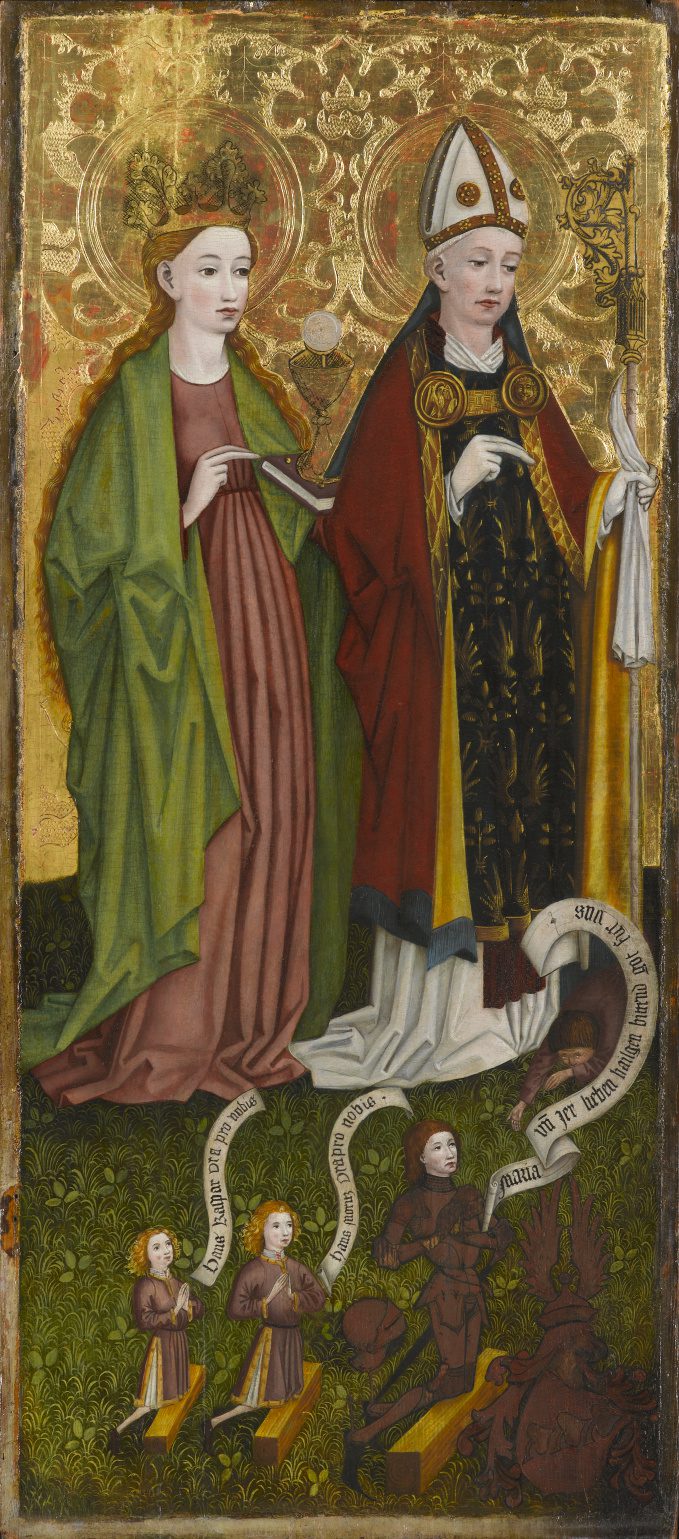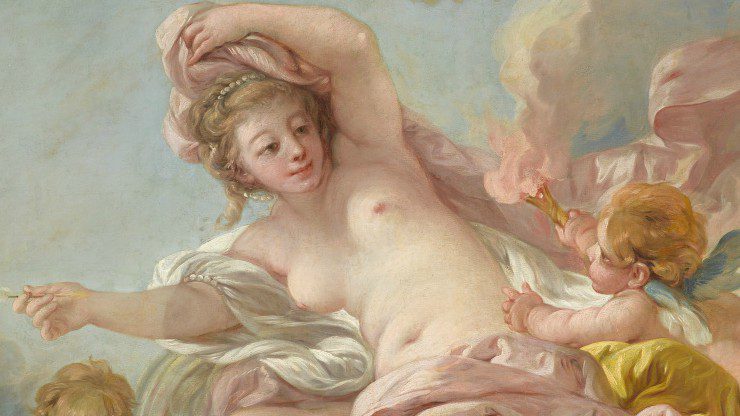There are many works in the NCMA’s collection that address different aspects of l’amour—virtue, lust, seduction, purity, passion, fertility, marriage, desire, adultery, triumph, and tragedy. For Valentine’s Day we invite you to take a brief but passionate tour of a few that may win your heart.

European Galleries
Those playful winged toddlers: Here Venus, the Roman goddess of love, is surrounded by many of her attributes, objects that describe her associations with love. The little winged cupids are mythical figures who use their arrows to make targets fall in love with the first beings they encounter, generating romance and sometimes havoc. Doves and pink roses suggest the lightness and intoxicating nature of love, whereas their thorns also refer to the sharp pain of the wounds that sometimes accompany love.

Rodin Court
Dying for love: In this sculpture Rodin, inspired by Dante’s Inferno, captures a kiss between tragic lovers Paolo and Francesca. Paolo is Francesca’s tutor and the brother of her betrothed, who would murder them both. Reading the Arthurian legend of Lancelot and his own intense love for Guinevere, Paolo and Francesca succumb to passion. Francesca recounts, “He who shall never be parted from me, tremblingly kissed me on the mouth … that day we read no farther.”
This work was originally conceived as part of Rodin’s large-scale sculpture The Gates of Hell. The artist chose to omit this tender yet ardent image from his final plan because its romantic vibe didn’t fit with the rest of the work. Luckily for us, it was preserved as an independent sculpture, a masterful depiction of burgeoning, secret love.

European Galleries
Who Was St. Valentine? The bishop saint in this German panel (part of a larger triptych, or three-paneled altarpiece) is particularly relevant to our theme. His priestly garb and the invalid at his feet identify him as St. Valentine, whose feast day is celebrated on February 14. Valentine was a bishop of Rome, martyred in the third century during the reign of the Roman emperor Claudius II. In 270 Claudius issued a law forbidding marriage during times of war–which was pretty much all the time back in those days, since the Romans had their hands full keeping the Goths at bay. Claudius believed married men made poor soldiers, reluctant to leave their loved ones to die a glorious death in battle. Valentine, the bishop of a nearby town, disagreed with the emperor and invited young lovers to come to him in secret to be married. When the emperor heard Valentine was performing marriage ceremonies, he ordered the bishop seized and brought before him. Since Valentine refused to change his views and renounce Christianity, Claudius threw him in prison, where the bishop converted his fellow prisoners and healed—through his prayers—Lucilla, the blind daughter of his jailer. In turn, she became a Christian and Valentine’s devoted follower.
Unfortunately in the meantime, the emperor had condemned Valentine to death. According to legend he was beaten with clubs, stoned, and then beheaded. Just before his horrible end, the saint left a final message to Lucilla that concluded with the words “from your Valentine.”
Ruth E. Carter: Afrofuturism in Costume Design
Academy Award–winner in Costume Design, Ruth E. Carter has helped bring characters to life in acclaimed Hollywood blockbusters. The NCMA celebrates the magic of her imagination.
Innovative AIM Program Reaches Thousands
Thinking outside the lines, NCMA outreach programmers connect local artists in rural communities with local students excited to discover the artist within.
Love in the Galleries
This Valentine’s Day we invite you to follow Cupid’s arrow through West Building to discover some amorous works in the NCMA’s collection.



